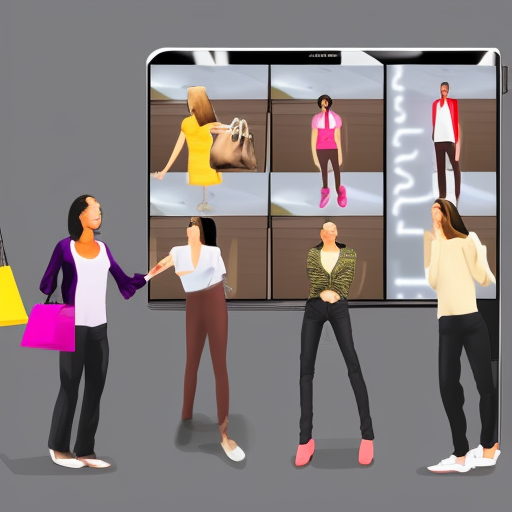Part 3: The Good, The Bad and The Beautiful of the Metaverse
- By Jason Turner
- January 19, 2023
Part 3: The Good, The Bad and The Beautiful of the Metaverse
Welcome to part 3, the final episode of our three-part journey into the metaverse.
In our last “episode” we talked about the incredible new ways we’ll interact with one another in both the physical and digital worlds and the detailed insights we can gain from this immersive digital environment.
In this third and last installment, we’ll venture into what makes the metaverse beautiful — and some of the cautionary tales it’s important to be aware of when visiting or building these early virtual worlds.
From here, you can shape your future with the metaverse — and even help shape the metaverse itself.
Let’s dive in!
The Experience Is What Makes It Real
Early adopters and enthusiasts will gush over the “presence power” of attending cartoon-styled virtual meetings, mousing their way through 3D animated bar crawls, or gyrating their digital avatars at Fortnite music nights — often while wearing a heavy headset or augmented reality glasses with only a couple of hours of battery time. Are these current levels of experience better for being in a shared virtual space?
Does today’s metaverse make business more efficient, time with friends more enjoyable, does that performance deliver more stage presence? The truth is…maybe not. But is this any different than the early days of the web, with crude blocks of text punctuated by bright blue links, pixelated gifs animating ad infinitum, and midi jingles jangling our eardrums?
Just like then, experiencing what is — for all the current day limits, worries and wonders — will give you an early advantage for when it comes time to create the richer, more immersive metaverse experience that your customers will come to both crave and expect.
Enjoy the Luxury
Luxury brands seem to understand this better than most, with early (and expensive) experimentation in the space(s). They are reviving old designs and selling NFT merch to satisfy an itch for the high end that seems just as powerful in the metaverse. For example:
The Gucci Garden on Roblox provided visitors a chance to try on virtual goods and walk-through branded environments. A staggering 20 million users visited — some of which, presumably, never interacted with the brand before. A virtual bag sold for $4K — in real world money. (The real-world equivalent sells for $700 less!)
Burberry’s NFTs included armbands, pool shoes and jetpacks. They sold out fast for $400K.
A Louis Vuitton adventure game paid homage to its founder and gave players a chance to hunt down “valuable” virtual items.
Charles Hambro of Geeiq represents brands like Tommy Hilfiger and Farfetch, and notes, “Fashion brands were slow to social media. They don’t want to be late again.” His clients’ strategies relate their products and brands to the fact that, “There are 3.2 billion people that play games now, and they aren’t just going into these virtual worlds to play — they are also, crucially, going in to socialize.”
This fits well with Mark Zuckerberg’s Horizon Worlds call to arms (and now legs — a new feature for avatars): “You’re going to have a wardrobe of virtual clothes for different occasions designed by different creators and from different apps and experiences.” Translation for luxury brands: users will pay big to dress their avatars for and with success.

The Darker Side of the Metaverse
As with any great invention there are downsides; and the metaverse isn’t immune to some of the things that plague any digital world, including multiple legal and commercial challenges. Here are some of the things to be aware of…
Beware the Shadows
The promises of the metaverse are not without their challenges — and outright dangers. The more immersive — the more “real” these virtual experiences become — the more these can translate into harmful behaviors. Hazards for your marketing and customers include:
Harassment & Mental Health
The fact that the metaverse is built on bringing people together also means fertile ground for chaos agents. Virtual reality can (and does) bring out the worst behaviors in people, some even counter to their character in the physical world. Sexual harassment and cyberbullying are already at work in today’s limited virtual worlds (and equivalent multiplayer games) and can contribute to adverse mental health for user/victims.
Identity Theft
Today’s identity theft is already responsible for $24 billion in damages. With multiple digital avatars at any individual’s disposal and multiple ways to exercise digital ownership (e.g., digital assets and virtual real estate), there’s both more to lose — and more identities for unscrupulous characters to abuse.
Unauthorized Data
The promise of Web3 is distributed ledger technologies (aka blockchain technology) to validate the data we each own, and only share and use it with individual users’ permission. The reality is that some companies have been known to misuse (or expose) collected data. With virtual reality pulling in whole new classes of information — including sensitive personal data like voiceprints, biometrics, and even facial geometry — there is the potential for profit to override personal choice.
Altered Perception
A study by Stanford University shows that both AR and VR can sway how individuals see and act in the real world. In one example, participants avoided sitting in a real-world chair because it was occupied in the metaverse by a computer-generated customized avatar. Coupled with malicious intent, this could have profound implications for undue and adverse influence.
Deepfake Dangers
Falsified audio and video are already on the rise. These “deepfakes” will only seem more real when the metaverse helps cement negative and untrue impressions with its 360-degree surround.
On a Happier Note… Swap Atoms for Voxels
A “voxel” is a computer modeling term for three-dimensional space: a building block, in a way, of the metaverse. And these 3D spaces bring new interactions and opportunities.
Just as the COVID pandemic reduced air travel (which accounts for 2.5% of global emissions) the metaverse can recreate the benefits of in-person business meetings and discretionary trips with immersive virtual meetings.
Another benefit is the idea of “digital twins”: recreating physical spaces through large data sources to make predictions on factors such as pollution and maintenance. The point of this is to then identify actions to address these challenges. One whitepaper suggests a digital twin could reduce a building’s carbon emissions by 50%, improve operational efficiency by 35% and increase human productivity by 20%.
Close the Gap on Climate Crisis
The immersive nature of time in the metaverse could also help overcome certain behavioral barriers to climate action. A 2019 study of 2 billion social media posts found that people quickly normalize climate conditions. This makes it easier to ignore — the proverbial “problem for another day.”
But virtual experiences can put us squarely at the center of the crisis in ways that simulate and show the long-term ramifications of short-term thinking. A more personalized interaction can prompt greater emotional engagement — and lead to product and lifestyle choices that are part of a more sustainable journey and future.
Forge a New Relationship with Nature
The ability to travel an existing physical space via the metaverse — from summiting Everest to swimming with whale sharks — is not a substitute for the real world, but an inspiration and encouragement to explore it. Or for those that don’t have the means or the physical ability to physically do these things, it’s an amazing new option now available to them.
A bit more “walk on the wild side” might be the metaverse’s potential to connect you with wildlife through avatars. Imagine the greater connection you’d feel for a species walking alongside them in their natural habitat — or even changing your avatar to become a bird or beast.
(Environmentally speaking, caveats to the metaverse still apply: the cloud services that virtual reality depend upon generate enormous carbon emissions. A 2020 analysis by Lancaster University on video game activity alone shows a 30% rise by 2030. Fortunately, the bigger players are taking steps: Meta has committed to net-zero emissions by that year, and Microsoft has pledged its Azure cloud platform to renewable energy by 2025.)

In Conclusion… The Metaverse is Waiting For YOU
As we started Part 1 of this series with a quote from an inventor, let’s finish with one, too. Alan Kay had his own thoughts about the future: “The best way to predict the future is to invent it.” Sounds like a good way to get started in the metaverse, too.
Our hope at IDLab is that this intro gets you thinking about the potential of the metaverse. We were early pioneers in marketing and utilizing new technology for both Web1 and Web2, so the fits and starts and “TBD” of Web3 and the metaverse feel very natural to our team.
While you’ll certainly see agencies rebranding themselves as “metaverse marketing”, the truth is that strategizing for what’s next doesn’t need labels: it needs smart, informed planners and partners working together to figure it out.
When you’re ready to take a walk in the metaverse, bring us your goals and ideas. We’ll supply the legs.
Want to know even more about the metaverse? Download ID Lab’s Metaverse Cheat Sheet.
Part I: What is the Metaverse and what is it made of?
Part 2: A New Strata of Insights and Engagement within the Metaverse
